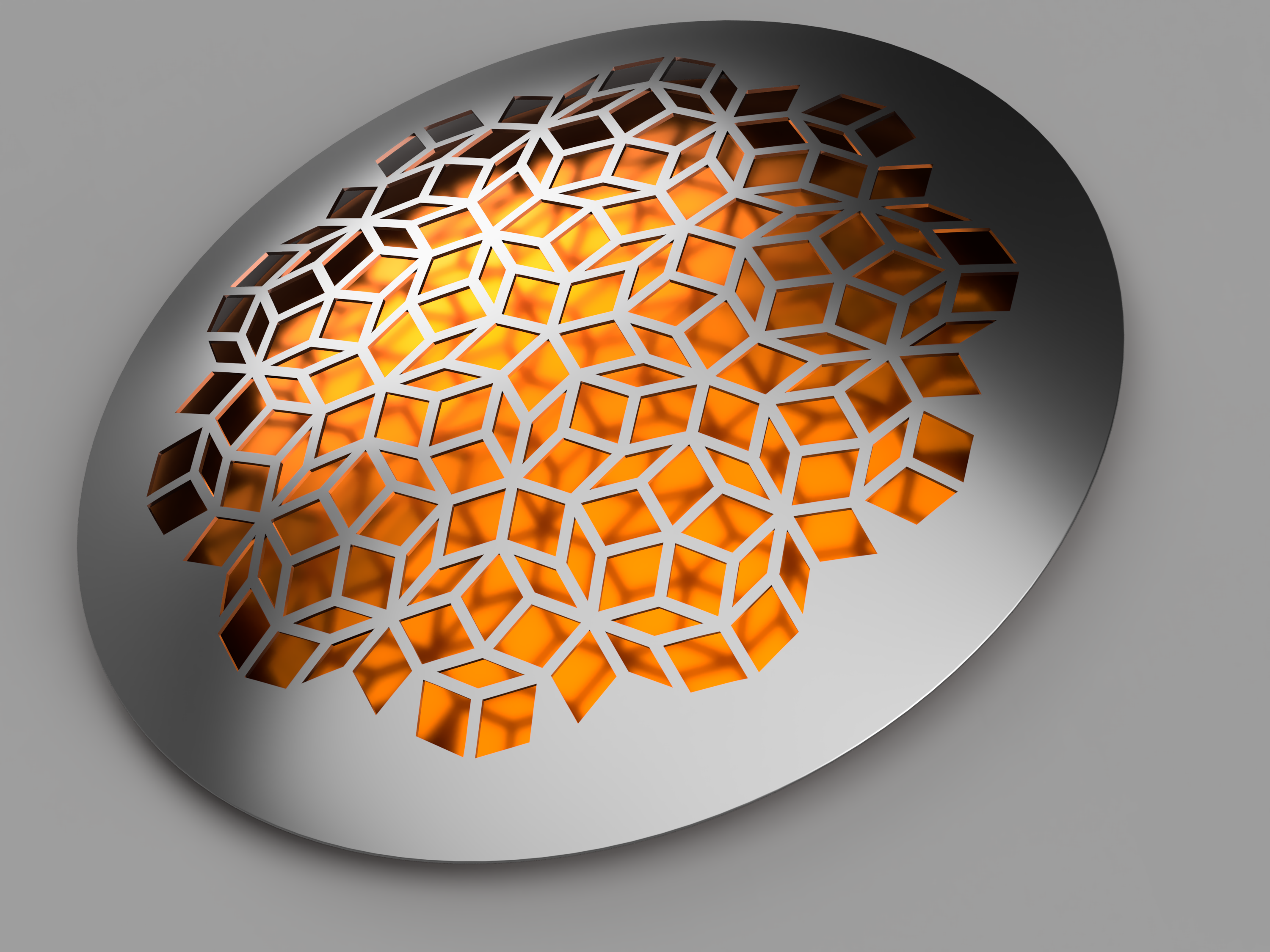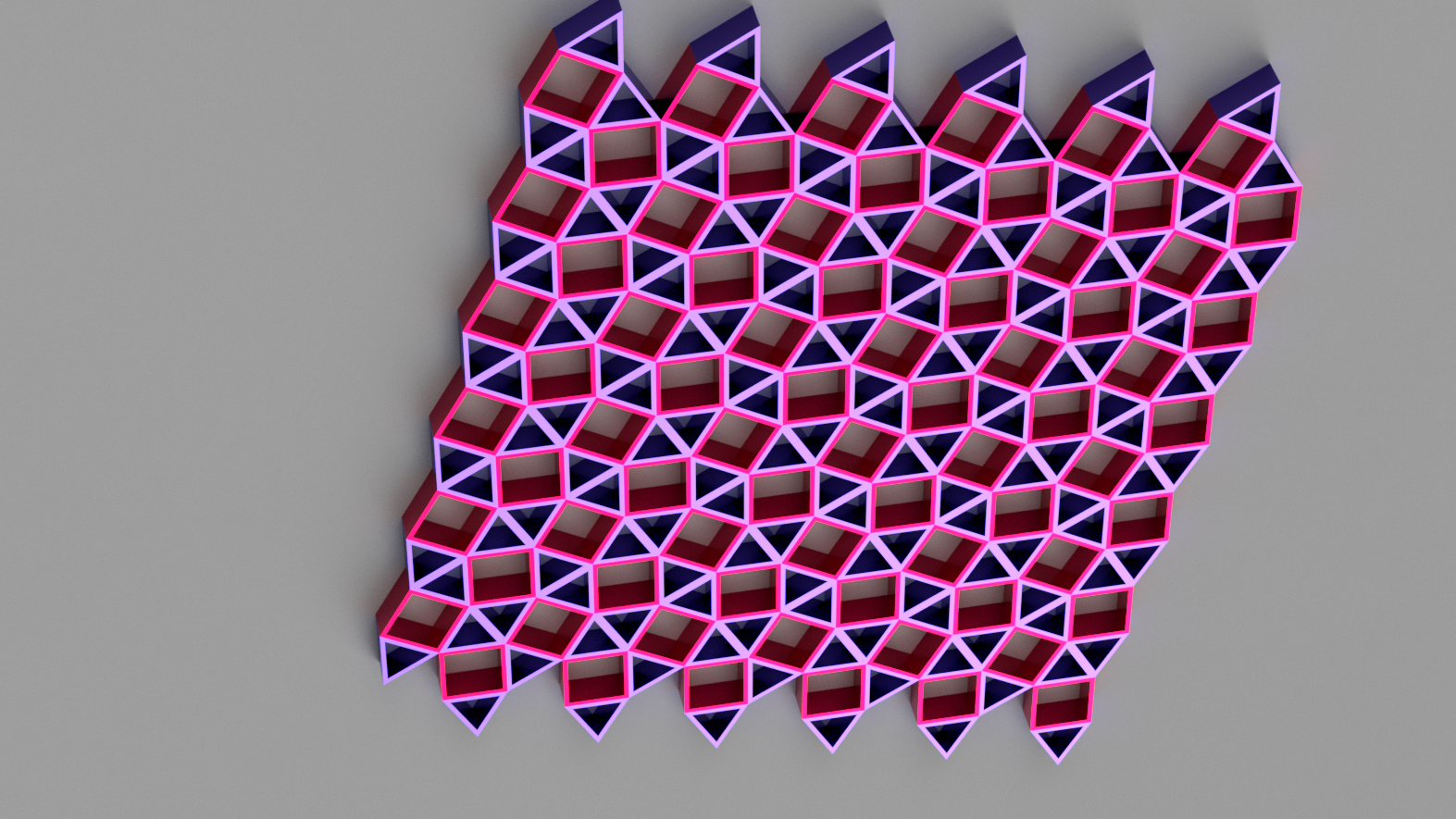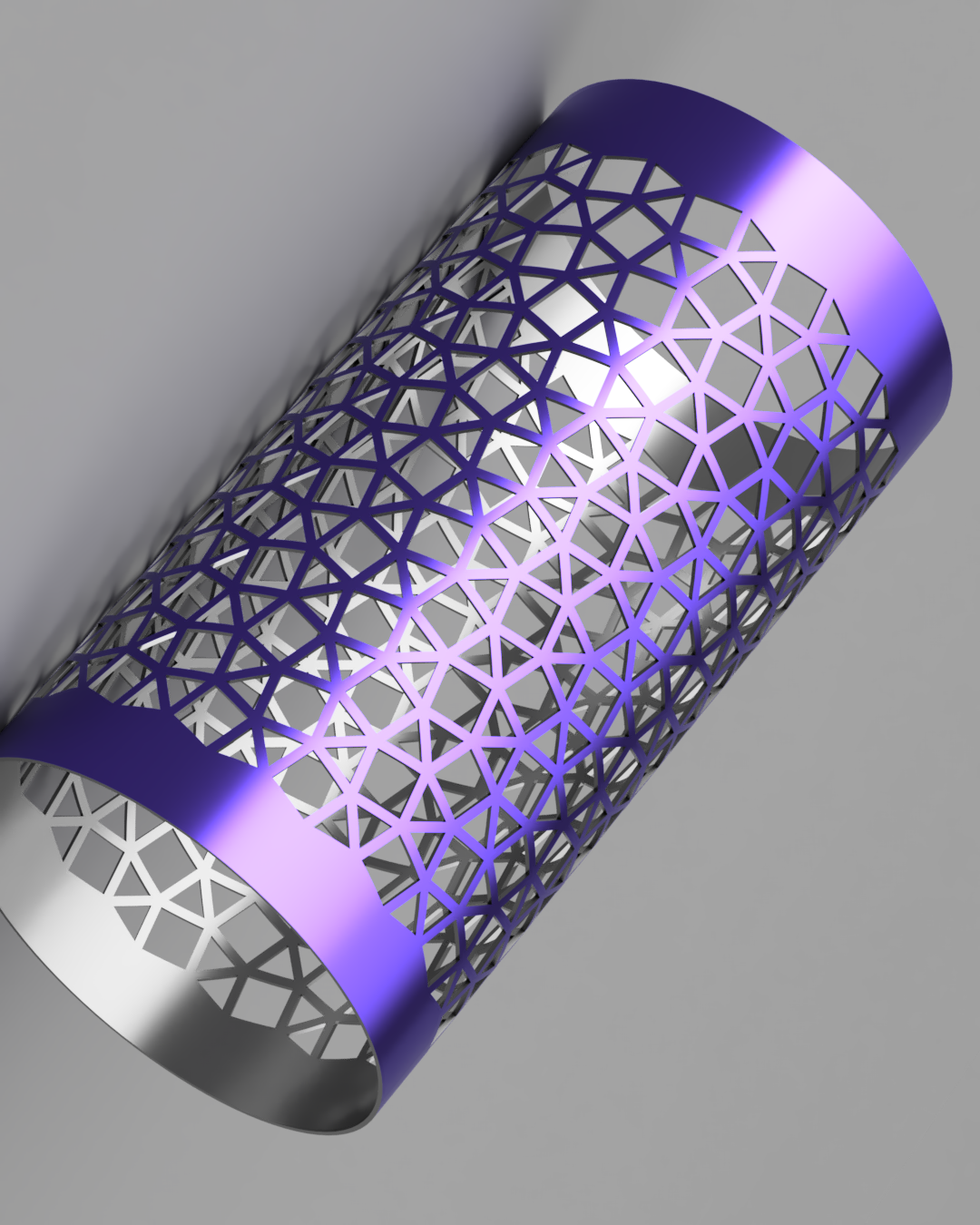Experiments with tiling and patterns
- March 6, 2024

Tiles are patterns of repeating geometric shapes that cover an area without overlap. A famous example is the Penrose patterns, which consist of special rhombuses. Fusion 360 software provides an API (application programming interface) that allows such patterns to be created and customized using programming.
Python is a programming language often used for automation tasks. Using the Fusion 360 API in Python we can write scripts to create and manipulate geometric shapes.
To create a Penrose pattern, we must first understand the mathematical rules underlying rhombuses. Then we can write a Python script that uses these rules to generate the rhombuses and place them in Fusion 360.
The Fusion 360 API allows us to access functions that allow us to create geometric shapes, such as lines, circles and polygons. We can also apply transformations such as shifts and rotations to arrange the shapes according to the rules of the Penrose pattern.
By parameterizing our script, we can vary the properties of the Penrose pattern, such as the size of the rhombuses, their colors, and their arrangement. This allows us to quickly create different variants of the pattern without having to intervene manually each time.
Overall, the Fusion 360 API in Python allows us to efficiently create and customize complex tiling patterns such as Penrose patterns, saving us time and effort while opening up creative possibilities.




